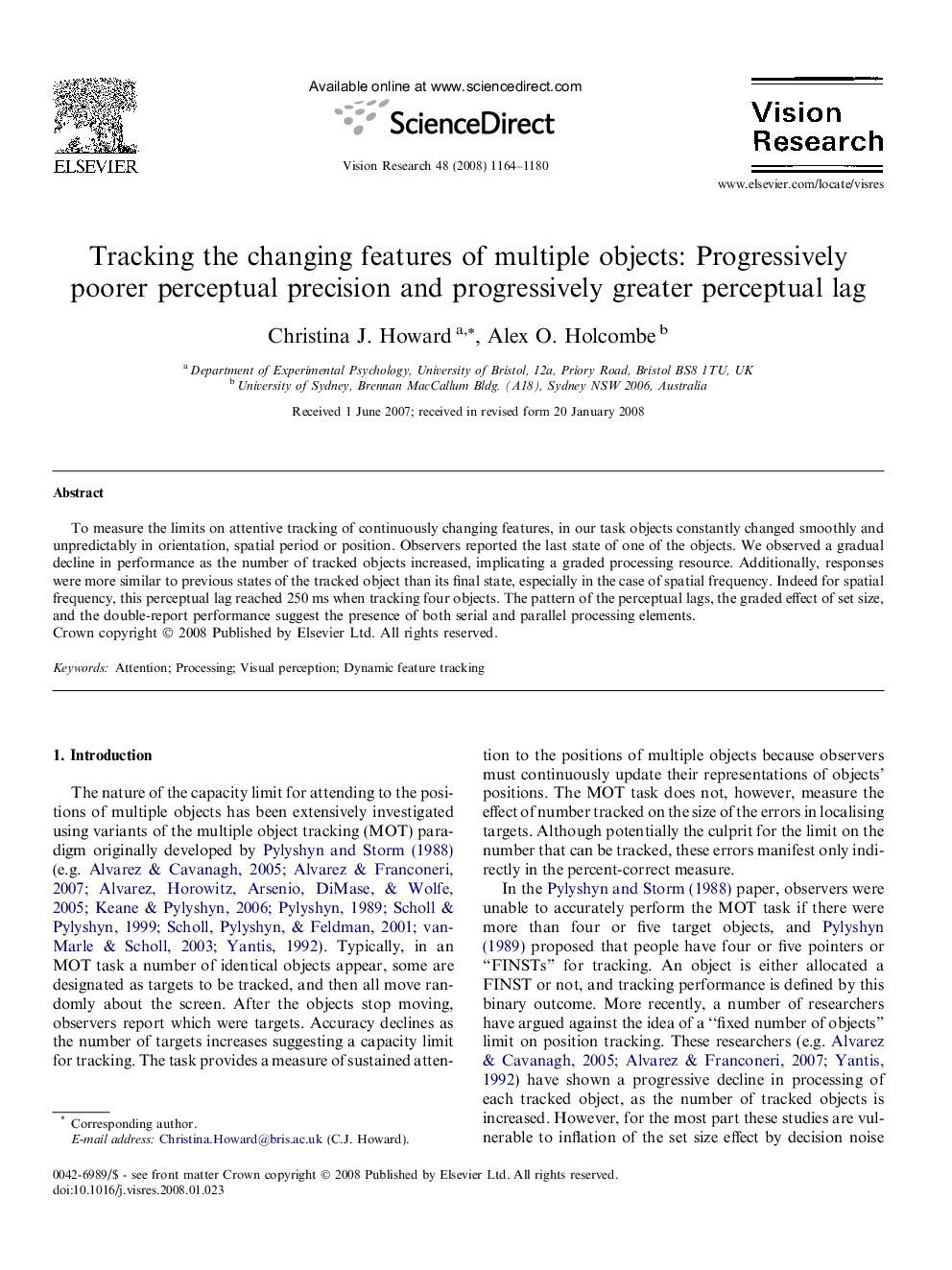| Article ID | Journal | Published Year | Pages | File Type |
|---|---|---|---|---|
| 4035000 | Vision Research | 2008 | 17 Pages |
To measure the limits on attentive tracking of continuously changing features, in our task objects constantly changed smoothly and unpredictably in orientation, spatial period or position. Observers reported the last state of one of the objects. We observed a gradual decline in performance as the number of tracked objects increased, implicating a graded processing resource. Additionally, responses were more similar to previous states of the tracked object than its final state, especially in the case of spatial frequency. Indeed for spatial frequency, this perceptual lag reached 250 ms when tracking four objects. The pattern of the perceptual lags, the graded effect of set size, and the double-report performance suggest the presence of both serial and parallel processing elements.
